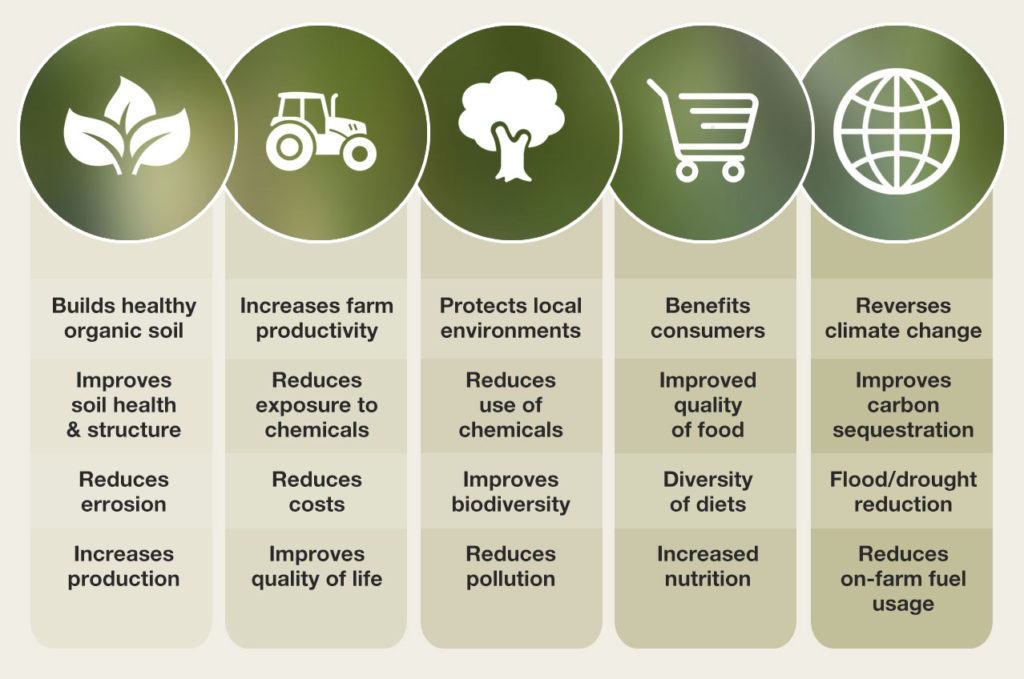Contact: +91 99725 24322 |
Menu
Menu
Quick summary: Discover the transformative impact of regenerative agriculture in empowering smallholder farmers. Explore the benefits, strategies, and success stories of integrating regenerative practices into farming communities. Join the movement towards sustainability and resilience.

Regenerative agriculture has emerged as a promising approach to sustainable farming, offering numerous benefits to both the environment and farmers. While the focus on regenerative practices often centers around large-scale agriculture, it is equally important to recognize the advantages it brings to smallholder farmers.
In this blog post, we will explore how smallholder farmers specifically benefit from adopting regenerative agriculture practices, empowering them to achieve greater productivity, resilience, and long-term sustainability.
A smallholder farmer, also known as a small-scale farmer who owns or manages a small plot of land for agricultural production. Smallholder farmers typically cultivate small areas of land, often ranging from a fraction of a hectare to a few hectares. They rely on their labor and limited resources to grow crops and raise livestock, often for subsistence and local markets. Smallholder farmers play a crucial role in global food production, particularly in developing countries. They often face challenges such as limited access to resources, market uncertainties, climate variability, and lack of infrastructure and support services. However, they contribute significantly to local food security, rural livelihoods, and the overall agricultural sector.
Smallholder farmers generate an estimated 32 percent of global greenhouse-gas (GHG) emissions from agriculture. They are also one of the populations most at risk from climate change.
You will be surprised by how many of the world’s village farmers know about climate change! Millions of farmers around the world know about climate change because they’re living on the receiving end of it.
Our analysis shows that in three countries—India, Ethiopia, and Mexico—nearly 80 percent of all smallholder farmers could be affected by at least one climate hazard by 2050. Moreover, climate change will affect land suitability for crop production. For example, by 2050, India could lose 450,000 square kilometers of land currently suitable for rainfed rice cultivation.

Smallholder farmers can derive numerous benefits from practicing regenerative agriculture, which is a holistic approach to farming that focuses on restoring and enhancing the health of the soil, promoting biodiversity, and improving overall farm sustainability. Here are some key benefits for smallholder farmers:
The demand for sustainable and regenerative agriculture products is steadily increasing as consumers become more conscious of the environmental and social impacts of their food choices. This demand presents significant opportunities for smallholder farmers, offering several benefits that can help uplift their livelihoods and agricultural practices.
According to a study by Nielsen, 73% of global consumers say they would definitely or probably change their consumption habits to reduce their impact on the environment.
Sustainable and regenerative agriculture products often command premium prices in the market due to their perceived environmental and social benefits. Smallholder farmers who adopt these practices can tap into niche markets and access buyers who prioritize ethically and sustainably produced food. This provides an opportunity for smallholders to increase their income, improve profitability, and reduce market dependence.
Also, by embracing sustainable and regenerative agriculture practices, smallholder farmers
can diversify their production systems and offer a wider range of products. For example, integrating agroforestry, organic farming, or permaculture techniques allows farmers to cultivate diverse crops, raise livestock, and incorporate value-added products. This diversification helps reduce risks associated with single-crop dependency and enhances the resilience of smallholder farmers in the face of market fluctuations and climate uncertainties.
Additionally, regenerative agriculture practices focus on optimizing resource use and reducing input costs. These practices promote efficient water management, soil health improvement, and natural pest control, reducing the need for costly chemical inputs. By minimizing resource wastage and adopting sustainable techniques, smallholders can reduce their production costs, improve farm efficiency, and enhance overall profitability.
Sustainable agriculture practices often emphasize diverse crop production and nutrient-rich food systems. Smallholder farmers can utilize these practices to enhance local food security and nutrition. By cultivating a variety of crops, promoting agroecology, and practicing seed saving, smallholders can contribute to improved dietary diversity, food sovereignty, and community resilience.
Regenerative agriculture plays a vital role in achieving several Sustainable Development Goals (SDGs). It contributes to sustainable food production, climate action, biodiversity conservation, water management, poverty alleviation, responsible consumption, and partnerships for sustainable development. Overall, regenerative agriculture contributes to multiple SDGs, providing a holistic approach to sustainable development by addressing environmental, social, and economic challenges in the agricultural sector.
Technology interventions play a crucial role in facilitating the transition of smallholder farmers to sustainable agriculture practices for climate change mitigation and adaptation.
The increasing demand for sustainable and regenerative agriculture products presents significant opportunities for smallholder farmers. By adopting these practices, smallholders can access premium markets, diversify their income streams, optimize resources, enhance environmental stewardship, and contribute to food security. Supporting smallholder farmers in adopting sustainable and regenerative agriculture is crucial for building a resilient, inclusive, and sustainable food system.
Regenerative agriculture enhances food security by increasing agricultural productivity, diversifying crops, and improving nutrition. It promotes climate action by reducing greenhouse gas emissions, sequestering carbon in the soil, and building resilience to climate change. Biodiversity conservation is fostered through practices that protect ecosystems, promote agroecology, and preserve habitat for wildlife. Water management and conservation are prioritized, leading to efficient water use and improved water quality.
It also helps address poverty and promote economic growth by reducing input costs, improving profitability, and creating employment opportunities in rural areas. It aligns with responsible consumption and production by minimizing the use of chemicals, promoting organic farming, and supporting sustainable consumer choices. Finally, regenerative agriculture encourages partnerships and collaboration among stakeholders, fostering knowledge exchange, capacity building, and collective action for sustainable development.
